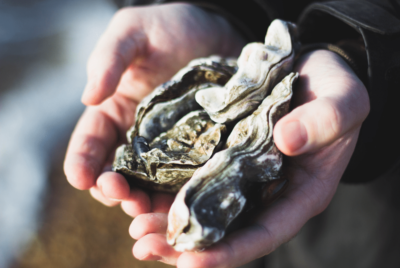Nereus Program’s Muhammed Oyinlola is lead author with Gabriel Reygondeau, Colette Wabnitz, and William Cheung (UBC) as co-authors on a new publication in Global Change Biology, “Projecting global mariculture diversity under climate change.” In their study, the authors project how climate change will affect 85 of the most commonly farmed fish and invertebrates in coastal and open ocean areas. The models they used show a potential drastic redistribution of mariculture “species richness potential”, with an estimated 10% – 40% drop in the number of species that can be farmed in tropical and sub-tropical regions, and a 40% increase in more northern regions under a ‘no mitigation policy’ scenario. The authors hope their results can help bring attention to the dramatic effects that climate change can have on the mariculture industry, as well as highlight the associated challenges and opportunities. You can read the full abstract below:
Abstract: Previous studies have focused on changes in the geographical distribution of terrestrial biomes and species targeted by marine capture fisheries due to climate change impacts. Given mariculture’s substantial contribution to global seafood production and its growing significance in recent decades, it is essential to evaluate the effects of climate change on mariculture and their socio-economic consequences. Here, we projected climate change impacts on the marine aquaculture diversity for 85 of the currently most commonly farmed fish and invertebrate species in the world’s coastal and/or open ocean areas. Results of ensemble projections from three Earth system models and three species distribution models show that climate change may lead to a substantial redistribution of mariculture species richness potential, with an average of 10%–40% decline in the number of species being potentially suitable to be farmed in tropical to subtropical regions. In contrast, mariculture species richness potential is projected to increase by about 40% at higher latitudes under the ‘no mitigation policy’ scenario (RCP 8.5) by the mid-21st century. In Exclusive Economic Zones where mariculture is currently undertaken, we projected an average future decline of 1.3% and 5% in mariculture species richness potential under RCP 2.6 (‘strong mitigation’) and RCP 8.5 scenarios, respectively, by the 2050s relative to the 2000s. Our findings highlight the opportunities and challenges for climate adaptation in the mariculture sector through the redistribution of farmed species and expansion of mariculture locations. Our results can help inform adaptation planning and governance mechanisms to minimize local environmental impacts and potential conflicts with other marine and coastal sectors in the future.
Reference:
Oyinlola, M.A., Reygondeau, G., Wabnitz, C.C.C., & Cheung, W.W.L. (2020). Projecting global mariculture diversity under climate change. Global Change Biology, 00:1-15. DOI: 10.1111/gcb.14974 link.







